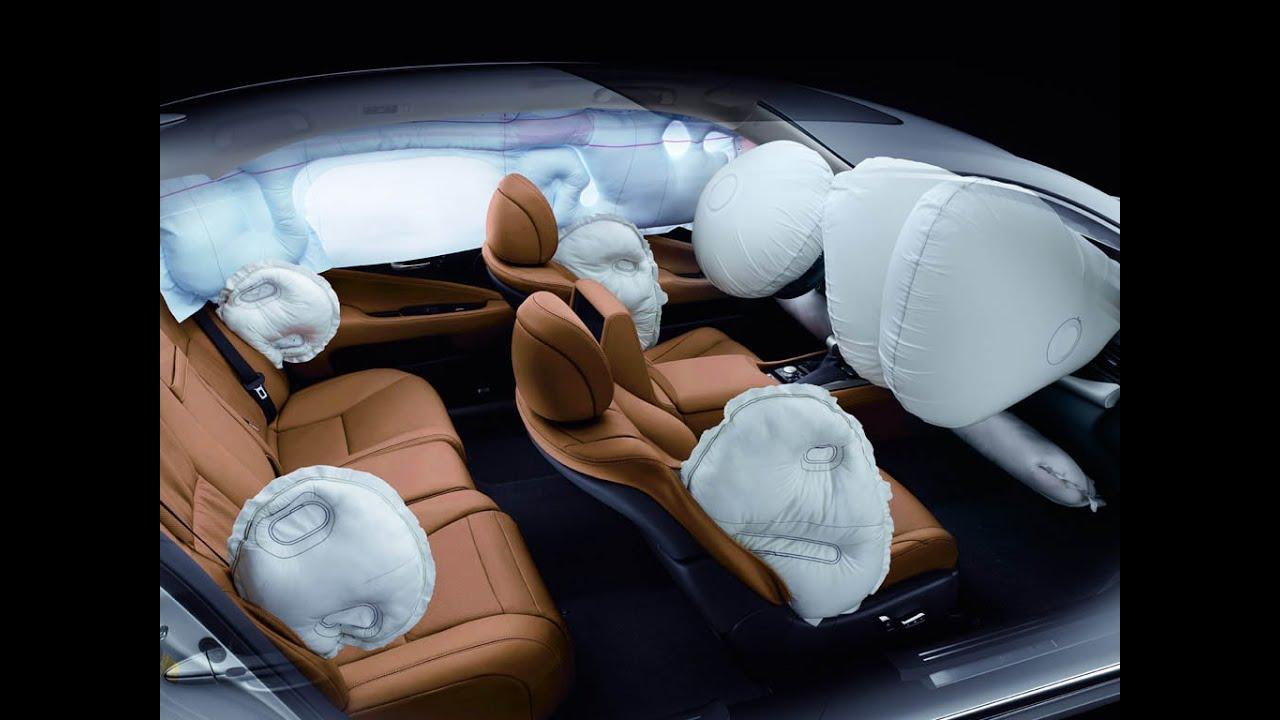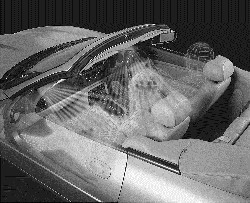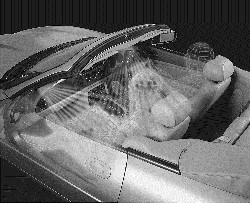
Airbags
 A number of ultrasonic sensors located at various points in the cabin determine whether and to what extent the airbags are activated.
A number of ultrasonic sensors located at various points in the cabin determine whether and to what extent the airbags are activated.
Adaptive Restraint Technology System (ARTS) is the latest electronic airbag control system.

The first and second racks (pillars A and B) have 4 sensors each. They determine the position of the passenger's head and chest. If it is tilted too far forward, the airbag will automatically deactivate and will not explode in a collision. When the passenger leans back, the airbag will reactivate. A separate sensor weighs the front passenger. Its weight determines the force with which the pillow will explode.
An electronic sensor in the driver's seat rails measures the distance to the steering wheel, while sensors located in the seat belt buckles check whether the driver and passenger are wearing their seat belts. At the same time, shock sensors located under the hood of the car, in front and on the sides of the car, evaluate the impact force.
The information is transmitted to the central processor, which decides whether to use the pretensioners and airbags. Frontal airbags can deploy with full or partial force. More than half a million possible situations are coded into the system, including a wide range of data on the position of the passenger and driver, the use of seat belts and possible collisions with the car.
Jaguar Cars suggested using ARTS. The Jaguar XK is the first production car in the world to feature this system as standard. ARTS collects data on the position of passengers, the location of the driver in relation to the steering wheel, seat belts fastened. In the event of a collision, it evaluates the force of the impact, providing optimal protection. Thus, the risk of injury to a person from an exploding pillow is reduced. An added benefit is the avoidance of the unnecessary expense of an airbag exploding when the passenger seat is empty.
To the top of the article
